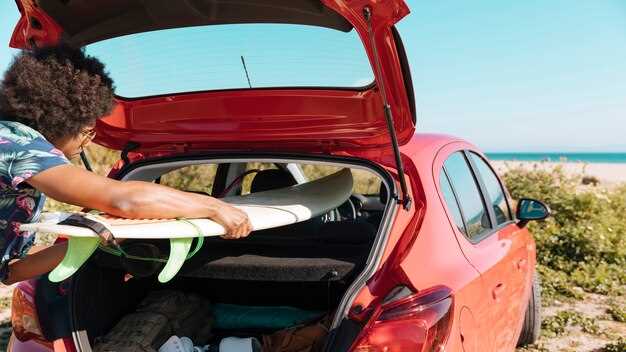
As you embark on a long road trip, ensuring the safety of your vehicle is paramount. A comprehensive vehicle inspection can be the difference between a smooth journey and a costly breakdown. Taking the time to check your vehicle before hitting the road can save you from unexpected troubles and provide peace of mind during your travels.
Start your preparation by examining essential components such as tires, brakes, and fluid levels. A quick check of your tire pressure and tread depth can prevent accidents and improve fuel efficiency. Similarly, ensuring your brakes are functioning optimally is crucial for safe travel on long stretches of highway.
Additionally, don’t overlook the importance of your vehicle’s engine and battery. Conducting an inspection of these elements can prevent deterioration and ensure reliability. Keep an emergency kit on hand, full of necessary supplies including water, first aid, and basic tools, so that you’re well-prepared for any situation that may arise on your journey.
Conducting a Comprehensive Vehicle Safety Check

Before embarking on a long road trip, it is essential to conduct a thorough vehicle safety check to ensure that your vehicle is in optimal condition. This inspection helps to identify potential issues that could lead to breakdowns or accidents during your journey.
Start by examining the tires. Check for proper inflation, tread depth, and signs of wear. Under-inflated or worn tires can significantly impact your vehicle’s handling and fuel efficiency. Ensure that the spare tire is also in good condition and properly inflated.
Next, inspect the brakes. Listen for any unusual noises when applying the brakes, and check the brake fluid levels. If the pedal feels soft or spongy, it may indicate a need for further inspection or replacement.
Examine the fluid levels, including engine oil, coolant, transmission fluid, and windshield washer fluid. Low levels can affect vehicle performance and safety. Top off any fluids as needed and look for leaks under the vehicle.
Test all lights and indicators, including headlights, brake lights, turn signals, and hazard lights. Functioning lights are crucial for safe driving, especially during night travel or adverse weather conditions.
Check the battery for corrosion and ensure that the terminals are securely connected. A weak or dead battery can lead to unexpected failures, so consider having it tested if it is more than a few years old.
Finally, ensure that your windshield wipers are functioning correctly and that the wiper blades are in good condition. Clear visibility is vital for safe driving, especially in rain or snow.
Conducting this comprehensive vehicle safety check will give you peace of mind and enhance your overall travel experience. By addressing any concerns beforehand, you can help ensure a safe and enjoyable road trip.
Essential Elements of a Trip Inspection Checklist
Before embarking on a long road trip, conducting a thorough inspection of your vehicle is crucial for ensuring both your safety and the smoothness of the journey. A well-prepared trip inspection checklist will help you identify any potential issues that could arise during travel.
1. Fluid Levels
Check all essential fluids, including the engine oil, coolant, brake fluid, transmission fluid, and windshield washer fluid. Keeping these at optimal levels is vital for vehicle performance and safety.
2. Tire Condition
Inspect your tires for proper inflation, tread depth, and any signs of damage. Under-inflated or worn tires can significantly impact handling and fuel efficiency, jeopardizing your safety.
3. Brakes
Ensure that your braking system is functioning properly. Listen for any unusual noises while testing the brakes and examine brake pads for wear. Properly functioning brakes are essential for your safety on the road.
4. Lights and Signals
Test all headlights, brake lights, turn signals, and hazard lights for functionality. Visibility is crucial when driving, especially at night or during adverse weather conditions, making this part of the inspection essential.
5. Battery Condition
Examine the battery for corrosion, secure connections, and sufficient charge. A failing battery can lead to unexpected breakdowns, which can disrupt your trip and compromise your safety.
6. Wipers and Windshield
Check the condition of your windshield wipers and replace them if necessary. Ensure that your windshield is free of cracks and chips that could impair visibility. Good visibility is crucial for safe driving.
7. Emergency Kit
Ensure your vehicle is equipped with an emergency kit that includes items such as a first aid kit, flashlight, water, non-perishable food, and basic tools. Being prepared for the unexpected can enhance your overall safety during the trip.
By diligently following this trip inspection checklist, you can minimize risks and enhance the overall driving experience, allowing you to focus on enjoying your journey.
Packing Emergency Supplies and Tools for Roadside Assistance

Before embarking on a long road trip, it is essential to prioritize safety by packing a well-thought-out selection of emergency supplies and tools for roadside assistance. Conduct a thorough inspection of your vehicle to determine if any additional items are necessary based on your specific route and climate conditions.
First, consider including basic supplies such as a first aid kit, which should contain bandages, antiseptics, and other medical essentials to address minor injuries. Additionally, pack a flashlight with extra batteries, as well as reflective warning triangles or flares to alert other drivers in case of a breakdown.
Tools, such as a tire jack, lug wrench, and spare tire, should be part of your emergency preparedness. A portable air compressor can also be beneficial for maintaining tire pressure during the trip. Remember to check your vehicle’s air pressure and tread before you leave to avoid unwanted flat tires.
Incorporating jumper cables is crucial for addressing battery issues. Ensure they are in good condition and readily accessible. Keep a multi-tool or basic tool kit in your trunk, as it can help with minor repairs that may be needed on the road.
Lastly, always include non-perishable snacks, water, and a charged mobile phone with emergency contact numbers saved. This ensures you can remain safe and secure while waiting for assistance. Being prepared with the right emergency supplies will enhance your overall safety and peace of mind during your journey.





